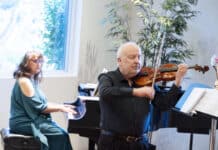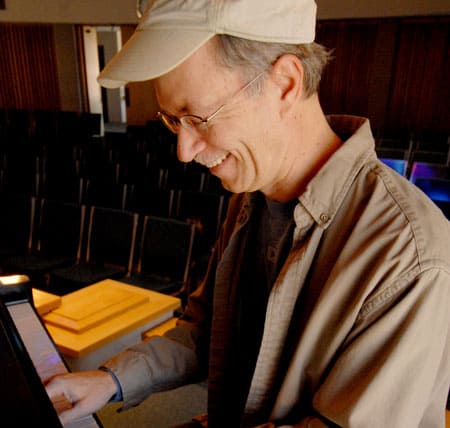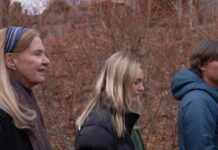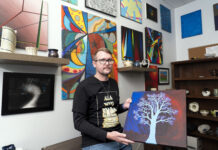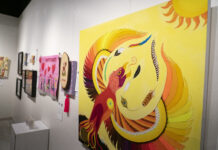Rownd discovered the technology in the early 1980s through an ex-girlfriend — a Stanford University student and a member of the Macintosh development team responsible for inventing the first Musical Instrument Digital Interface, or MIDI.
By Tyler Midkiff
Larson Newspapers
When Sedona musician Mark Rownd began making music, the electronic revolution hadn’t even begun.
Rownd discovered the technology in the early 1980s through an ex-girlfriend — a Stanford University student and a member of the Macintosh development team responsible for inventing the first Musical Instrument Digital Interface, or MIDI.
The invention allowed electronic instruments, computers and other audio equipment to communicate and synchronize with each other, and it opened up a whole new world in terms of musical composition.
Rownd said he immediately dove head first into the technology, and rather than waiting for a record deal that may never come, he began publishing his own work.
In 1995, Rownd released “Desert Waves” — a heavily synthesized instrumental release.
Tracks from the album soon appeared on National Public Radio, according to Rownd, particularly during a program commemorating the 50th anniversary of the bombing of Hiroshima.
Rownd’s music continued to air on NPR, as well as several college radio stations. Billboard magazine even featured Rownd in a lengthy article documenting the rise of musicians who use the Internet to connect with producers and radio stations.
Shortly after appearing in Billboard, Rownd landed his first record deal with Spotted Peccary Music. The deal secured shelf space for his releases in stores like Barnes & Noble, Virgin Megastores, Borders and others. Amazon also carries his work, he said.
Rownd enjoys spending hours alone in the studio, but there’s nothing like spontaneous composition — setting up with a group of intuitive musicians and just letting go for 20 minutes or so.
When Rownd began learning polyrhythms — a technique which involves playing two or more rhythms simultaneously — he said his reasons for making music changed. The concentration needed to play polyrhythms required Rownd to dig deeper.
“It became much more internal and more personal,” he said.
Rownd began even dreaming of music and his albums became attempts to recreate the sounds of his subconscious.
“Music is eternal,” Rownd discovered. “It really is something you carry with you after this life.”
Occasionally, some of Rownd’s friends in the music industry have been asked to write music they didn’t really believe in, but to avoid that same fate, Rownd said he’s always done things other than music to earn additional income.
“You go into the industry with a pure heart about your music,” Rownd said. “But the next thing you know, all you care about is writing 20-second sound clips for the transition between the end of a TV segment into a commercial.”
Rownd would rather paint houses or play part time in a side band than end up in that position, he said. And ultimately, being “commercially irresponsible” means Rownd can write the music he wants to and never have to worry about satisfying anyone but himself.
“It’s been a slower path,” Rownd assured, “but this is my art. I care about it and I’ve been able to keep it exactly what I want it to be.”
For years, Rownd studied art, specifically painting, in college. So naturally, his professors were shocked when he graduated from art school and decided to pursue music full time.
It was a difficult decision, Rownd said, but a necessary one.
After working on a painting for a week or so, Rownd can reach a point where his work begins to really communicate with him. It’s an intensely gratifying feeling, he said, but one he can reach in just minutes behind the drums.
When Rownd graduated from art school, he wondered — if he didn’t give music a shot, would he someday regret it? The answer was a resounding, “yes,” he said, so he hit the road and began playing full time.
Rownd later returned to art. And in fact, some of his work now hangs on the walls at Goldenstein Gallery in Uptown.
Though Rownd hasn’t released an album since 2004, he’s still hard at work, he said. He’s in the process of composing a solo piano album, as well as co-authoring a book about polyrhythmic drumming and recording a polyrhythmic drumming CD.
All three projects are a bit of a departure from Rownd’s career in ambient electronic music, but he has no intentions of abandoning his computers, synthesizers and MIDI sequencers. He’s just looking to try something a little different, he said. And as with painting, he’ll be back.
Tyler Midkiff may be reached at 282-7795, Ext. 122, or e-mail to tmidkiff@larsonnewspapers.coma



